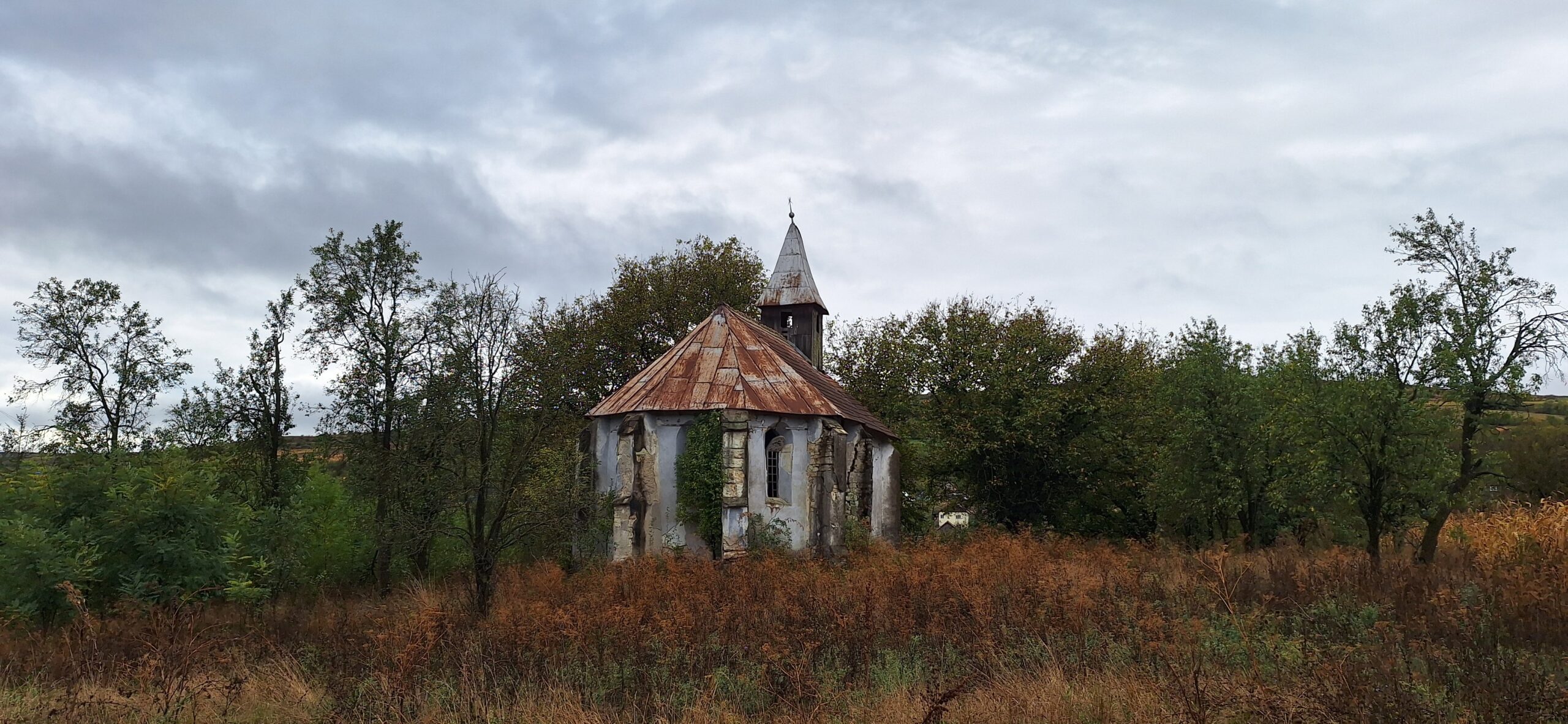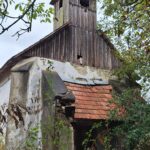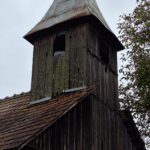The Reformed Church in Aluniș, once a large Gothic structure
Aluniș, documented as early as 1279, was once owned by the noble Kecseti family. Its importance was marked by the construction of a large Gothic Roman Catholic church in the 15th century. The wars fought in the following centuries left their mark on this church, dedicated to Saint Margaret. It endoured numerous damages and alterations that visibly diminished its medieval appearance. Thus, from the once grandiose church, only the former sanctuary remains. This was later supplemented with a wooden tower (1897, 1904) that still houses its two bells.
Once a village inhabited by Hungarians, the population converted to Calvinism in the latter part of the 16th century. The community disappeared at the beginning of the 1700s due to repeated invasions by the Turks and Tatars. The village was repopulated with Romanians, and drastic demographic changes followed. Therefore, the Hungarians, and later the Jews who settled here, are now only a memory lost in the mists of time. With no Hungarians left in Aluniș today, the fate of the small church hangs by a thread. There is no one to maintain the building, which has been severely damaged by time.
The Reformed Church in Aluniș, a true time capsule
Since the church wasn’t marked on the digital map, I stopped a group of women who were returning from the Orthodox service to ask about the exact location. „Oh, sir, it’s just a little further up from the police station, it’s almost collapsed!,” exclaimed one of them, gesturing with both hands towards the church. Surrounded by dense vegetation and guarded by an old walnut tree, the building is crumbling on all sides. However, peeking inside through the narrow windows, you can still see the untouched covering on the Holy Table, as well as the dusty wooden benches, turning the small place of worship into a time capsule.
The old organ was sold by the local community to finance repair works. Also, the painted wooden ceiling was restored and is now displayed at the Museum of Ethnography in Budapest. Beneath the church, there is likely an undiscovered crypt, and the existing walls may hide fragments of medieval paintings. A marble tombstone from the early 17th century has been incorporated into the northern side of the building, where a painting by Árpád Telegdy was once also displayed. The pulpit and choir, painted in the 18th century by the famous Saxon carpenter Lorenz Umling the elder from Saschiz, are now just a pale memory.

With the last partial interventions conducted back in 2007, only God knows when the Reformed Church in Aluniș will be fully restored and saved. Time is ticking, and soon, the old key may no longer have anything to lock…





















